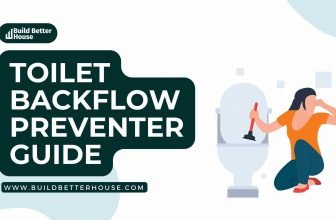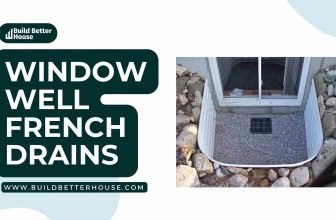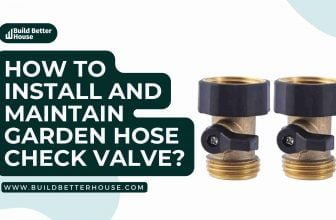Draining Pool with Pump: A Comprehensive Guide
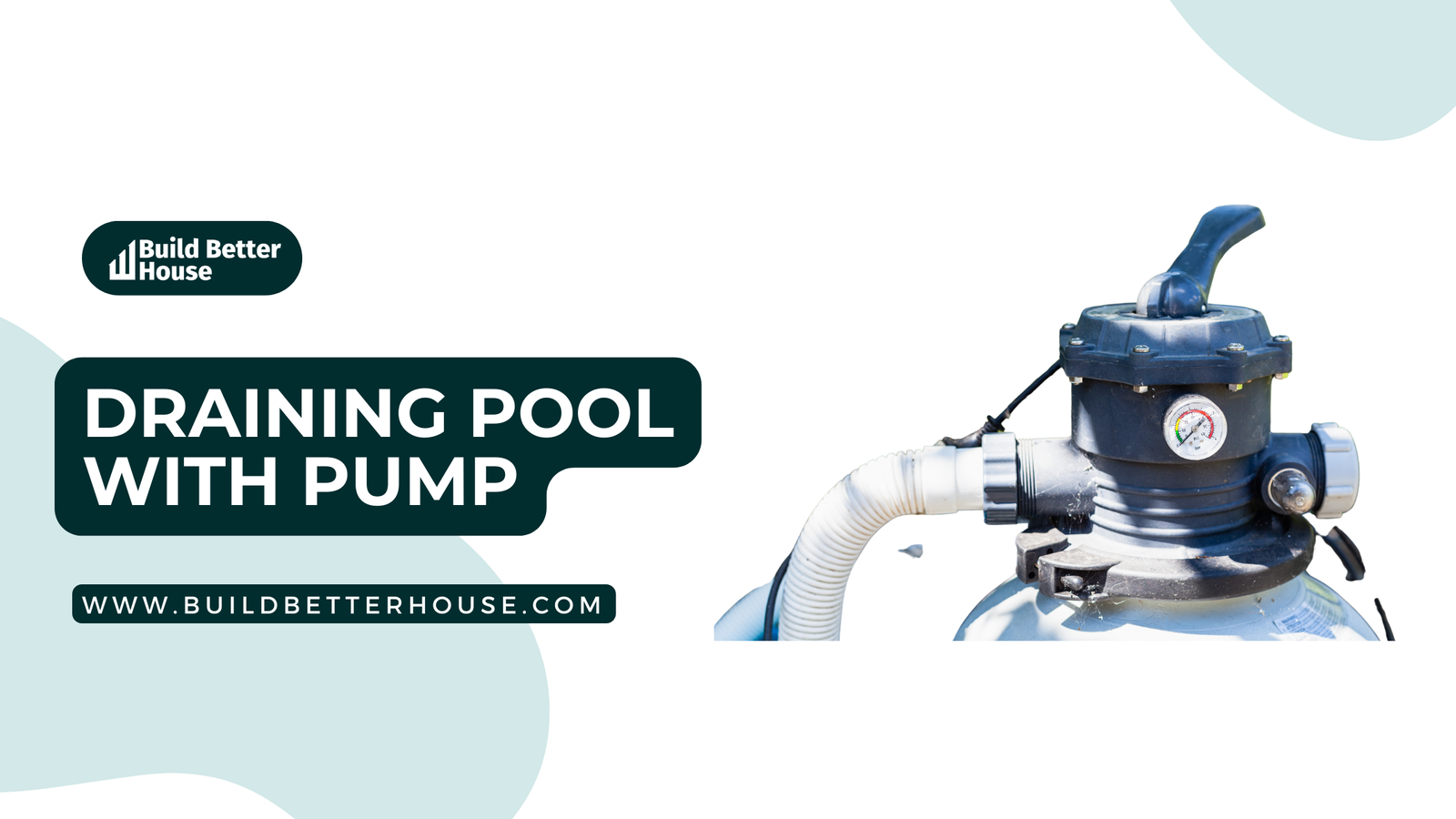
Draining a swimming pool may become necessary for a variety of reasons, including poor water quality, high levels of Total Dissolved Solids (TDS), high Cyanuric Acid (CYA), or high Calcium Hardness. Apart from these reasons, proper pool maintenance requires partial or complete draining every 3-5 years. If you’re considering draining your pool, using a pool pump is a common and effective method for doing so.
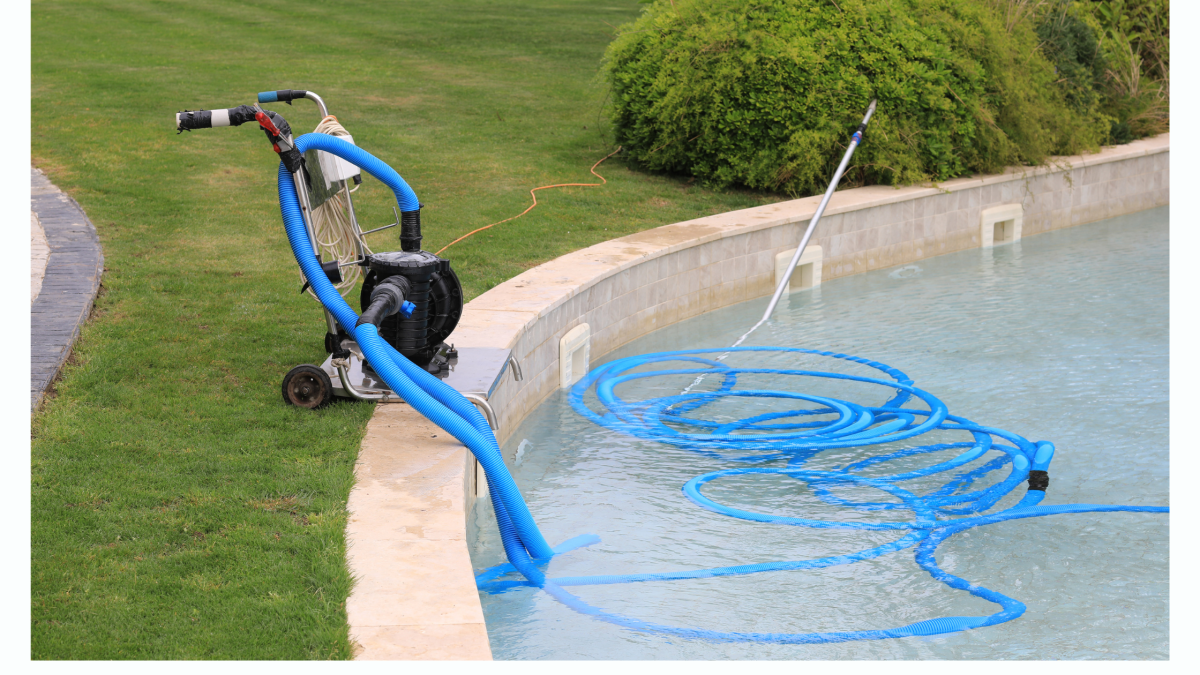
Before beginning the pool draining process, it’s important to understand the necessary steps and precautions. First, check the weather, as cooler temperatures below 85°F are ideal for draining to avoid damage to the finish or liner. Then, gather the appropriate tools and equipment, such as a submersible pump, garden hose, and replacement hydrostatic plugs. Finally, keep in mind any local regulations and environmental concerns to prevent violating any laws or regulations.
Key Takeaways
- Draining a pool with a pump is often necessary for proper maintenance and water quality management.
- Preparation, tools, and weather conditions are important factors when draining a pool.
- Always consider local regulations, environmental concerns, and safety precautions before draining your pool.
Understanding the Draining Process
Dry vs Wet Pool Draining
When draining your pool, it’s essential to understand the difference between dry and wet pool draining. In dry pool draining, the pool is entirely emptied, and any debris or muck on the surfaces is allowed to dry before being removed. This method is useful when you need to fully replace the pool’s water due to poor water quality or high levels of Total Dissolved Solids (TDS), Cyanuric Acid (CYA), or Calcium Hardness1.
On the other hand, wet pool draining involves partially draining the pool, typically by removing 50-75% of the water. This method is suitable for maintaining the water balance and addressing minor water quality issues without completely emptying the pool.
In-Ground Pools vs Above-Ground Pools
The draining process for in-ground and above-ground pools slightly differs, but the basic principles are the same. For both types of pools, you’ll need a pump to help with the draining process. A regular pool pump may not be ideal for this task, as it can take in air instead of water when the pool starts to drain2. To avoid damaging your pump, consider using a submersible pump designed for draining purposes2.
For in-ground pools, the most common method for draining is by using a sump pump. Connect a hose to the pump and place it in a safe draining area. Always monitor the draining process to avoid any overflow or damage to the pool3.
For above-ground pools, you can also use a sump pump, or you may opt for a gravity-assisted draining method by using a hose to siphon the water out of the pool. Ensure the hose is long enough to reach a safe draining area where the water can be collected or disposed of without damaging your yard or your neighbors’ properties.
Remember, there’s more to draining a pool than just pulling a plug or starting a siphon. Follow the guidelines and precautions to ensure a safe and effective draining process for your swimming pool.
Footnotes
- Leslie’s Pool Supplies. Pool Draining 101. Retrieved from https://www.lesliespool.com ↩
- Pool Service Gilbert. How To Drain A Pool – 5 Steps. Retrieved from https://www.pool_service_gilbert.com ↩ ↩2
- Blue Science. How to Drain Your Swimming Pool (Properly). Retrieved from https://www.bluescience.com ↩
Selecting the Right Pool Pump
When it comes to draining your pool, choosing the right pump is crucial. As there are various pumps available in the market, it can be overwhelming. In this section, we will help you select the right pump by considering some important factors.
First, identify the type of pump you need. A popular type of pump for draining pools is the submersible pump, as it can be submerged in water and quickly drain the pool. Alternatively, you can use your pool pump – just ensure you know how to properly operate it to avoid any damage to the pump system.
Next, consider the pump’s capacity. You should select a pump that has enough power to efficiently drain your pool. Calculate the volume of water in your pool and check the pump’s specifications to ensure it can handle such a task. In general, a higher horsepower pump can drain larger pools at a faster rate.
Think about the connection as well. Most pumps can be connected to a garden hose, ensuring easy water disposal as it drains from the pool. Check the compatibility of the hose attachment, as different pumps may have varying hose sizes and requirements. Make sure you have the proper fittings and hoses to connect the pump to your desired drainage location.
Also, consider maintenance and safety features. A good pump should be easy to clean and maintain, and it should have safety features like a built-in automatic shut-off to prevent potential damage due to dry-running.
In summary, when selecting a pool pump to drain your pool, take into consideration the type of pump, its capacity, connection, and maintenance or safety features. With a suitable pump and the right connections, you can confidently and efficiently drain your pool, ensuring proper maintenance and care for your swimming area.
Preparing the Swimming Pool for Draining
Before you begin the process of draining your pool with a pump, it’s essential to prepare the swimming pool properly. By following these steps, you’ll ensure a smoother, safer draining process that protects both your pool and the surrounding area.
First, turn off your pool’s circulation system and identify the multiport valve on your pool equipment. Ensure that it’s set to the “waste” or “drain” setting. This redirects water from the pool to an appropriate discharge location, such as a storm drain or designated area in your yard.
Next, locate your main drain and any skimmers in your swimming pool. Remove any obstacles, such as leaves or debris, that could block the flow of water. If your pool has a liner, be cautious during this process to avoid damaging it.
As you prepare your pool for draining, visually inspect the water for any signs of algae. If present, apply an appropriate algaecide according to the manufacturer’s instructions and allow time for it to work effectively. Addressing algae growth prior to draining helps avoid reintroducing contaminants when the pool is refilled.
Now, it’s time to set up your submersible pump. Place the pump at the deepest point in your pool, ideally near the main drain. Ensure that it’s securely connected to a power source and arrange the discharge hose in the direction you want the water to flow as it’s pumped out.
Once your pump is in place and your multiport valve is set correctly, you’re ready to begin the process of draining your swimming pool. As a pool owner, it’s essential to monitor the draining process, checking for any issues and adjusting the pump and hose if needed. By preparing your pool properly, you’re setting yourself up for a successful pool-draining experience.
Draining Based on Pool Types
Depending on the type of pool you have, the process of draining may differ. Here, we discuss how to drain both in-ground and above-ground pools.
Above-Ground Pools
Above-ground pools are typically smaller in size and have less water than in-ground pools. To drain an above-ground pool, you can use a standard sump pump or a small submersible pump. Keep in mind that vinyl liner above-ground pools may be more susceptible to damage and should be drained gradually to avoid causing any harm to the liner. Be sure to plan where the water will be discharged to avoid flooding in the nearby area.
In-Ground Pools
In-ground pools are larger and require more powerful pumps to drain the water. The most common type of pump used for draining in-ground pools is a pool cover pump or an electric sump pump. When draining an in-ground pool, follow these guidelines based on the pool’s material:
- Vinyl Liner: Be cautious when draining a vinyl liner pool, as removing water may cause the liner to shift, wrinkle or become damaged. Drain the pool gradually and cautiously monitor the liner throughout the process.
- Fiberglass Pool: Due to their single-piece construction, fiberglass pools can risk structural damage if drained improperly. It is crucial to consult your pool installation or maintenance professional before draining a fiberglass pool.
- Concrete Pool: Concrete pools can withstand the draining process more than other pool types. However, it is still crucial to ensure the pool’s hydrostatic relief valves are functioning correctly before you start. This is to prevent the pool from potentially lifting or floating out of the ground due to hydrostatic pressure.
Remember to always follow local codes and guidelines when draining your pool and ensure proper water disposal methods. Do not hesitate to consult a pool professional if you are unsure of the right process for your specific pool type.
What to Do After Draining the Pool
After you have successfully drained your pool using a pump, it’s essential to take some vital steps to ensure that your pool is clean, well-maintained, and ready for refilling. Here is what you need to do:
First, take the opportunity to clean the pool surfaces thoroughly. With the water gone, it’s easier to scrub the walls and floor to remove any built-up dirt, algae, or stains. Use a pool brush and a suitable pool cleaner to make sure you cover every inch of the pool.
Next, you should inspect your pool for any damage or necessary repairs. Check for cracks or other problems in the pool’s walls or floor. If you spot any issues, it’s best to address them before refilling the pool, as it will be much easier to access and fix them while the pool is empty.
Once your pool is clean and any needed repairs have been completed, you can begin the process of refilling it with fresh water. Make sure you have a plan in place to obtain fresh water, whether it’s through your local water supply or by using a water truck.
As you’re refilling the pool, it’s essential to keep an eye on the water level. Make sure the water reaches the correct level, typically halfway up the skimmer opening. As the pool fills, it’s also a good time to test the water chemistry, ensuring that the pH, alkalinity, and chlorine levels are well-balanced. You may need to add chemicals such as chlorine and pH adjusters to achieve the proper balance, ensuring a safe and comfortable swimming experience.
Lastly, don’t forget about ongoing pool maintenance after refilling. Regular cleaning, testing, and chemical adjustments will be necessary to keep your pool in top shape. By following these steps and practicing diligent pool maintenance, you’ll enjoy a clean, safe, and refreshing swimming environment for you and your family.
Safety Precautions and Recommendations
For draining your pool with a pump, it is crucial to place your safety and pool’s well-being at the forefront. Here are some important safety precautions and recommendations to ensure a smooth process.
Maintaining adequate hydrostatic pressure is critical, as it counteracts groundwater pressure. A mismatch of these pressures might result in pool damage, or worse, lifting the pool structure. Therefore, keep a close eye on the pool’s hydrostatic valve, which prevents groundwater from entering the pool by automatically releasing the groundwater into the pool shell if the pressure gets too high.
Consult a pool professional before initiating the drainage process if you have any concerns. Pool experts have the know-how to help you avoid potential mistakes and unforeseen complications. Remember that do-it-yourself (DIY) solutions can sometimes lead to more extensive issues.
Always follow manufacturer guidelines when operating the pool pump. It is essential to ensure that the pump you are using is compatible with your pool and understand its features and limitations. This knowledge will help you operate the pump safely and efficiently.
Do not drain your pool too quickly. Rapid drainage increases the risk of groundwater pressure overtaking hydrostatic pressure. It is advisable to operate your pump at a slow, steady pace, allowing for a gradual and controlled release of water.
When draining your pool, ensure your children, pets, and other individuals are not nearby. Pool workspaces must be off-limits to avoid accidents and any potential risks associated with the drainage process.
Finally, take proper measures for chemical disposal. Be responsible and attentive to the chemicals used in your pool and their disposal. Improper handling or mixing of different chemicals could result in hazardous situations.
By adhering to these safety precautions and recommendations, you can confidently and effectively drain your pool with a pump while ensuring the safety of those involved and the longevity of your pool.
Managing Water Quality and Balance
Maintaining the right water quality and balance in your swimming pool is crucial for its longevity and your safety. One of the key aspects of pool maintenance involves monitoring the levels of various chemicals and substances like Total Dissolved Solids (TDS), pH, chlorine, cyanuric acid, and calcium hardness.
Total Dissolved Solids (TDS): TDS are composed of organic and inorganic substances which are dissolved in your pool water. A high TDS level may lead to cloudy water and decreased chlorine effectiveness. It is generally recommended to keep TDS levels below 1500 ppm. Draining and refilling your pool partially or completely every 3-5 years can help keep TDS in check.
pH: The pH level of your pool water impacts the effectiveness of chlorine, the comfort of swimmers, and the potential for scaling or corrosion. Aim to maintain a pH level between 7.4 and 7.6, as this provides optimal conditions for chlorine disinfection and reduces the risk of eye and skin irritation.
Chlorine: Chlorine is the primary sanitizer used in swimming pools to kill bacteria, algae, and other contaminants. It’s important to maintain a free chlorine level between 1.0 and 3.0 ppm to ensure effective disinfection. Test your pool water regularly and adjust the chlorine levels as needed.
Cyanuric Acid: Cyanuric acid, also known as pool stabilizer or conditioner, helps protect chlorine from being broken down by sunlight. A proper cyanuric acid level (30-50 ppm) can extend the life of your chlorine, reducing the need for frequent additions. However, high levels of cyanuric acid can decrease chlorine’s effectiveness, so you may need to partially drain and refill your pool to lower it.
Calcium Hardness: Calcium hardness in pool water affects the potential for scaling and corrosion. High calcium levels can cause calcium deposits to form in your pool, while low levels can lead to corrosion of pool equipment. Aim for a calcium hardness level between 200 and 400 ppm in a plaster pool or 150 and 250 ppm in a vinyl pool.
By regularly testing your pool water and adjusting the levels of these chemical components, you can ensure a safer, clearer, and more enjoyable swimming environment. In some cases, draining your pool with a pump may be necessary to manage water quality and balance. This process can help eliminate excessive TDS, high cyanuric acid, and elevated calcium hardness, ensuring optimal conditions for your pool.
Special Circumstances and Additional Considerations
When draining your pool with a pump, it’s important to be aware of special circumstances and additional considerations that might affect the process. In certain weather conditions, such as heavy rain, you might face the risk of pool overflow. Monitor the weather and plan the draining process accordingly to avoid excess water accumulation.
If you’re considering an acid wash or resurfacing your pool, draining it with a pump is an essential step. Using a submersible pump will help you to drain out the water efficiently and prepare the pool for these maintenance tasks. Keep in mind that different pool surfaces, such as fiberglass and vinyl, may require specific draining techniques and precautions.
Pay attention to the soil surrounding your pool, as it can affect the draining process. In some cases, the soil might not be stable enough to handle the sudden absence of water pressure, potentially leading to pool damage or cracks. Consulting with a professional before draining can help in avoiding any complications related to soil stability.
Additionally, be mindful of local regulations and guidelines concerning pool draining. Some local water authorities may have restrictions on where the pool water can be discharged or require a permit for draining your pool. Be sure to check with your local authorities to ensure that you are in compliance with these regulations.
Draining your pool with a pump is a crucial part of maintaining its quality and appearance. By considering factors such as weather, pool surfaces, and local regulations, you can ensure that your pool draining process is efficient and safe for your property.
Local Regulations and Environmental Concerns
When draining your pool with a pump, it is essential to be aware of local regulations and the potential impact on the environment. Improper disposal of pool water can harm aquatic life and disrupt the balance of local ecosystems.
Always check with your local water authority for guidelines and requirements on proper pool drainage in your area. Some regions may have regulations regarding pool water disposal, especially during periods of water scarcity or drought.
Avoid draining pool water into storm drains, as this can cause pollution in nearby water bodies. Storm drains are designed to handle rainwater runoff and are usually connected directly to streams, rivers, or other local bodies of water. Discharging chemically treated pool water into storm drains may result in violations of local, state, and federal regulations.
Instead, consider draining your pool water into the sanitary sewer system, where it will be treated before being released into the environment. This method is more eco-friendly and typically aligns with local regulations. However, make sure to seek approval from the local water authority before using the sanitary sewer system for pool drainage.
Additionally, when using a pump to drain pool water, ensure that it does not cause flooding or property damage in your neighborhood. You might be held liable for any harm caused by improper pool drainage.
Remember, being aware of the local regulations and the potential impact on the environment when draining your pool is not just a responsibility but also a way to maintain healthy ecosystems and water resources for future generations.
Costs and Tools Involved in Pool Draining
Draining your swimming pool may become necessary due to various reasons such as water quality issues, repairs, or resurfacing. It’s crucial to know the costs and tools required for this process before you proceed.
In terms of costs, draining your pool using a pump can range from $150 to $800, depending on the pool’s size, the amount of cleaning needed, and whether the filtration system needs to be flushed. Note that these costs can vary regionally. Additionally, pool maintenance services might charge between $50 to $100 per hour for chlorine pool maintenance.
For the draining process, you will need some essential tools and equipment:
- Submersible pump: A fully submersible pump is the primary tool needed for this task. These pumps can be purchased or rented, with prices varying based on the pump’s capacity and brand. For instance, the AquaPro cover pump has a draining capacity of 3000 GPH (gallons per hour) and costs around $149. A pump of this capacity can drain most pools in a day or overnight.
- Garden hose: Ensure that you have a long enough garden hose to reach from the pool to the drainage point. The length required would depend on your pool’s location and the available drainage area.
- Sump-pump to garden hose adapter: This adapter is required if your pump doesn’t come with one. It allows you to connect the pump to a standard garden hose.
- Replacement hydrostatic plugs: These plugs may be needed if you have to replace the old ones during the draining process.
- Hammer: This basic tool might be useful for removing or installing hydrostatic plugs.
Remember to check local regulations and guidelines when draining your swimming pool, as some areas have specific requirements regarding water disposal methods. Also, consider environmental factors, such as using the drained water for irrigation if possible, to minimize water waste.
Conclusion
In order to efficiently and effectively drain your pool with a pump, it’s important to follow a few key steps. First and foremost, select the appropriate pump for your pool. This will ensure that the process goes smoothly and avoids any potential damage to your property.
Before beginning the drainage process, prepare your pool by turning off the electricity to the pump and pool light. Additionally, ensure that any necessary valves are open, and hoses are properly connected and extended as far as possible from the pool.
When draining your pool, it’s best to do so in a timely manner to prevent any damage to the pool’s plaster and surfaces. Keep in mind that partially draining the pool may be a better option for certain types of pools, and always be conscious of safety precautions throughout the process.
By adhering to these guidelines, you can confidently and effectively drain your pool with a pump, ensuring a properly maintained and enjoyable swimming pool.
Frequently Asked Questions
How do I use a sand filter to drain my pool?
To use a sand filter to drain your pool, follow these steps:
1. Turn off the pool pump and ensure all valves are closed.
2. Set the filter valve to “Waste” or “Drain” mode.
3. Connect a backwash hose or discharge hose to the waste port of the filter and lead it to a suitable area for water disposal.
4. Turn on the pool pump and monitor the discharge hose to ensure proper drainage.
5. Once the pool is drained to the desired level, turn off the pool pump and set the filter valve back to “Filter” mode.
What is the technique to drain a pool with a Pentair pump?
To drain a pool with a Pentair pump:
1. Turn off the pump and ensure all valves are closed.
2. Set the multiport valve to “Waste” or “Drain” mode.
3. Connect a drainage hose to the waste port and lead it to an appropriate discharge area.
4. Turn on the Pentair pump to initiate the draining process.
5. Monitor water level and turn off the pump when desired level is reached.
Reset the multiport valve back to “Filter” mode.
How can I empty my pool without using a pump?
To empty your pool without using a pump:
1. Use a pool siphon or vacuum hose and submerge one end into the water.
2. Place the other end of the hose in a lower area outside of the pool where water can safely drain.
3. Fill the hose with water and quickly seal both ends.
4. Release them simultaneously, ensuring the submerged end remains below the water surface.
5. The siphon effect will cause the water to flow from the pool until the desired level is reached.
What is the best way to remove rainwater from my pool?
The best way to remove rainwater from your pool is to use a submersible pump. Place the pump in the pool and connect a discharge hose to it. Direct the hose to an appropriate drainage point and turn on the pump to remove the rainwater.
How do I quickly drain my above ground pool?
To quickly drain your above ground pool:
1. Assemble a powerful submersible pump and connect a discharge hose.
2. Place the pump in the lowest part of your pool and direct the hose to a safe drainage area.
3. Turn on the pump and allow water to drain from the pool.
4. Monitor the water level closely during the process and turn off the pump when the desired level is reached.



